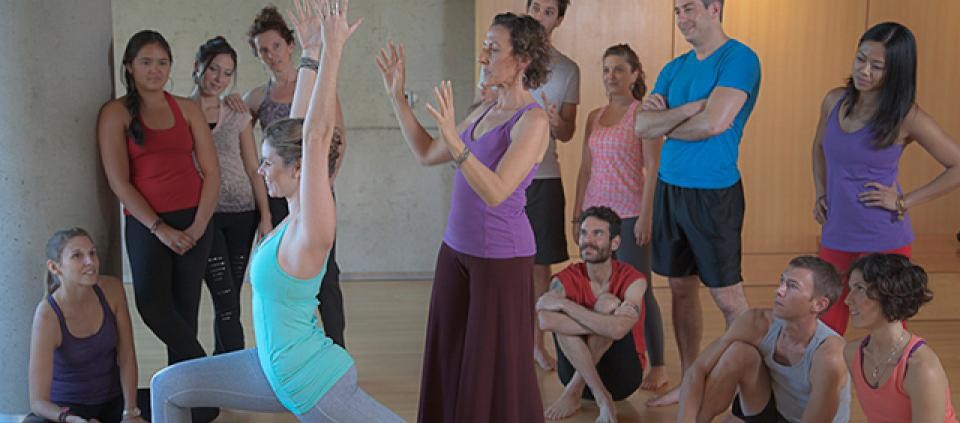I’d Love to Do a Yoga Teacher Training, But …

Are you a dedicated yoga practitioner who’s thinking about enrolling in a teacher training program—but you’re questioning if it’s the right choice for you? Maybe you can’t do a Headstand, or not sure if you’re teacher material? Perhaps you’re wondering if anyone older than age 35 is teaching yoga these days?
Here are a few of the most common concerns yoga teachers hear from prospective students about committing to yoga teacher training.
I’m on the fence about investing in tuition. It’s a big decision.
It was for me, too. When I registered for the training, I also applied for a scholarship from Kripalu. It covered 40 percent of my tuition. Also, I know some students are starting to crowd-fund to cover costs, which makes sense to me because yoga is really all about giving back to the world.
I looked at the training as an investment in my career and my personal development. I don’t think I’ve ever met a yoga teacher—from any lineage—who has said, “Gee, I really wish I hadn’t spent the money on training.”
I’ve definitely received a return on my investment. I got my feet wet subbing classes at the treatment center where I work. They started asking me to teach more classes and, from there, I received a recommendation to teach at a spa. My students believed in me, and soon I did, too.
I can’t do all the postures perfectly.
The most important thing you learn in training is how to teach the postures; it doesn’t matter whether you can do them “perfectly” or at all. (In Kripalu Yoga, the only “perfect” pose is the one that’s practiced with safe alignment and breath awareness.) Kripalu’s 200-hour training focuses on a series of core postures that teachers can effectively execute, which builds a lot of confidence in breaking down poses and creating sequences for students.
One of my role models is Matthew Sanford. He teaches yoga from a wheelchair. I always remind myself of that whenever I question my confidence.
I don’t want to be the oldest one in the class.
In my teacher training class, the students ranged from ages 18 to 70. It was an incredible gift to receive the wisdom of multiple generations. Being a good yoga teacher is not dependent, in any way, on how old you are. We each bring gifts—whether they’re flexibility and strength or wisdom and experience.
I’m interested in deepening my yoga practice, but I’m not sure whether or not I want to teach.
Students do enroll in teacher training simply to deepen their practice, with no intention of teaching. You learn so much about alignment, anatomy, sequencing, and self-inquiry that you never practice in the same way again. And, once that happens, students are often so inspired by the transformation of their personal practice that they become passionate about sharing that experience with others.
I really want to share the gift of yoga with the world. But I can’t do Headstand.
While Headstand seems to have become a symbol of yogic achievement, any wise teacher will tell you that being able to stand on your head does not take you closer to enlightenment. Far more important is paying attention to safety and self-care, which means practicing and teaching the poses that are right for you. In fact, at one of the centers where I work, we’re asked not to teach Headstand, because it’s not a pose that works for everyone. In my Kripalu Yoga Teacher Training, we learned several variations of inverted postures that have the same benefits as Headstand, but are much more accessible to a wider population.
© Kripalu Center for Yoga & Health. All rights reserved. To request permission to reprint, please e-mail editor@kripalu.org.
Katie Hagel, RYT-500, is a certified Nature and Forest Therapy Guide, Ayurvedic Health Counselor, and Kripalu Yoga teacher.
Full Bio and Programs